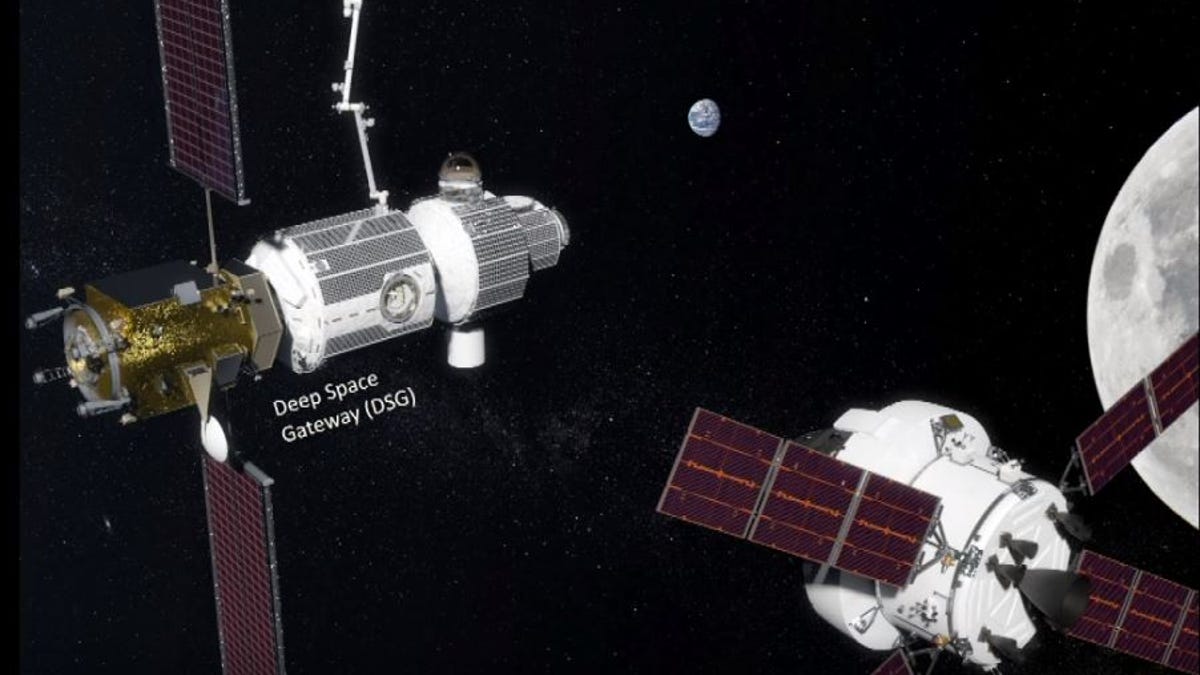NASA plans to build a 'gateway' to Mars around the moon
The space agency wants to build up a deep-space garage beyond Earth where the ship that will take people to the Red Planet can be assembled and tested.

NASA's planned "Deep Space Gateway"
NASA has been hyping its "Journey to Mars" initiative for years now, and President Donald Trump's administration recently reaffirmed that it wants to see a manned mission to the Red Planet by 2033.
This week the space agency provided more details on how it plans to get to our neighboring world, and the road map runs past the moon. Speaking at the Humans to Mars summit in Washington, D.C., NASA's Greg Williams outlined plans to build a small space station orbiting the moon in what's known as cislunar space, which will serve as a "Deep Space Gateway."
It will be "a transportation node for us in cislunar space that we can use to mount expeditions to Mars," Williams said Tuesday. "It will allow us also to gain confidence that we can conduct deep space operations ... in an environment that is going to be more similar to the long transit to Mars."
Williams said the gateway will be built to dock with the Orion spacecraft and support a crew of four for up to a month at a time. A series of launches of NASA's Space Launch System would be required between next year and 2026 to build up the gateway in cislunar space.
Once the gateway is complete, it will become a staging area for the assembly and testing of a Deep Space Transport that would eventually take humans farther.
"If we can conduct a year-long crewed mission on this Deep Space Transport in cislunar space we believe we will know enough and have enough confidence that we can then send this thing, crewed, on a thousand day mission to the Mars system and back," Williams explained.
So that's the plan for getting human footprints on Mars by 2033. Williams pointed out that NASA hopes to work with both commercial and international partners along the way.
That's good because NASA certainly isn't the only name in the Mars game. SpaceX and Mars One hope to put people there sooner, while China and Russia are looking at landing in the 2040s or so.
Last we checked the odds were on SpaceX getting there first, and Elon Musk has also said his company also plans to send a few paying customers on a trip around the moon next year. Perhaps NASA and Elon need to start coordinating on Mars plans sooner than later.
Technically Literate: Original works of short fiction with unique perspectives on tech, exclusively on CNET.
Crowd Control: A crowdsourced science fiction novel written by CNET readers.

